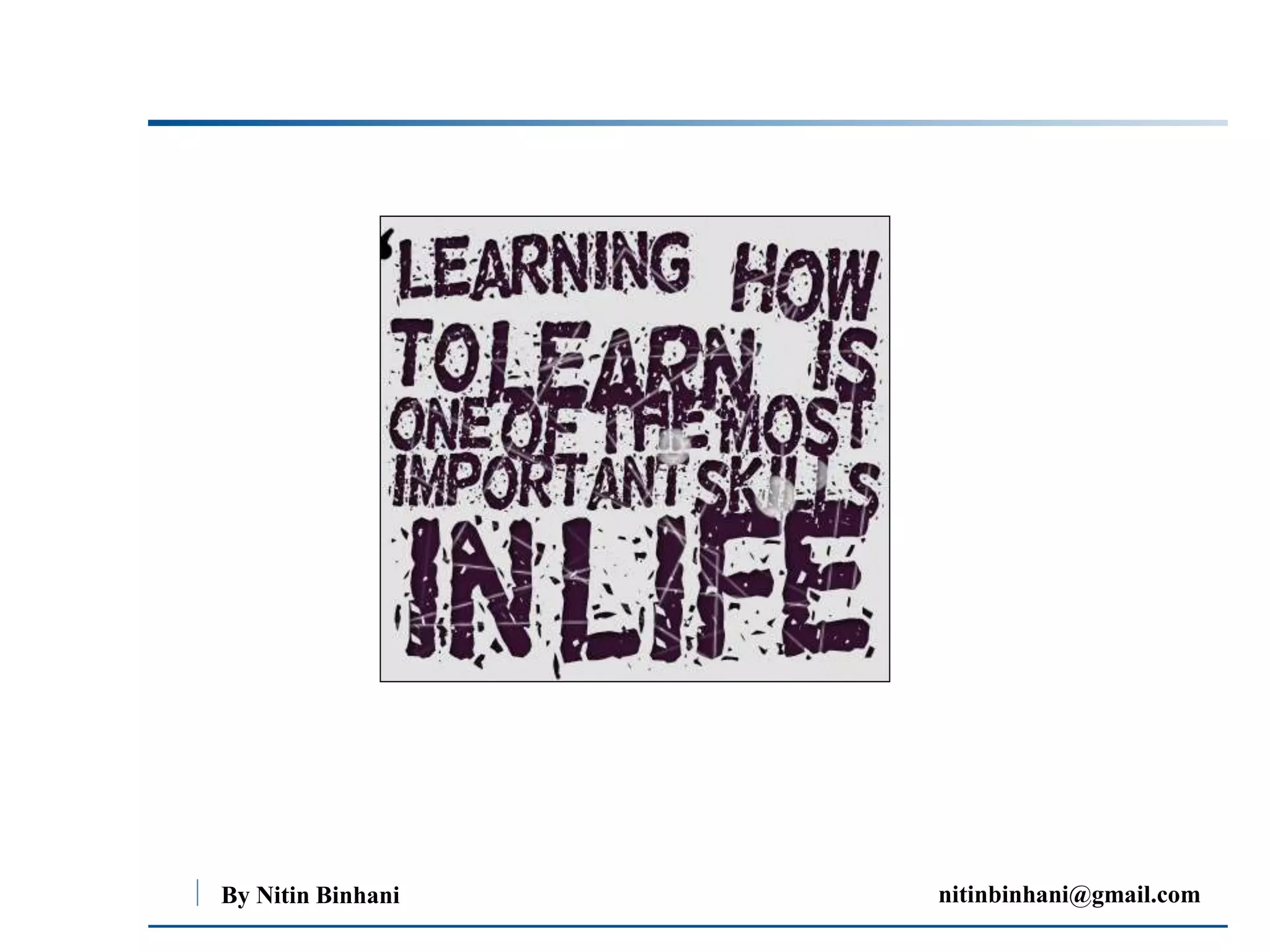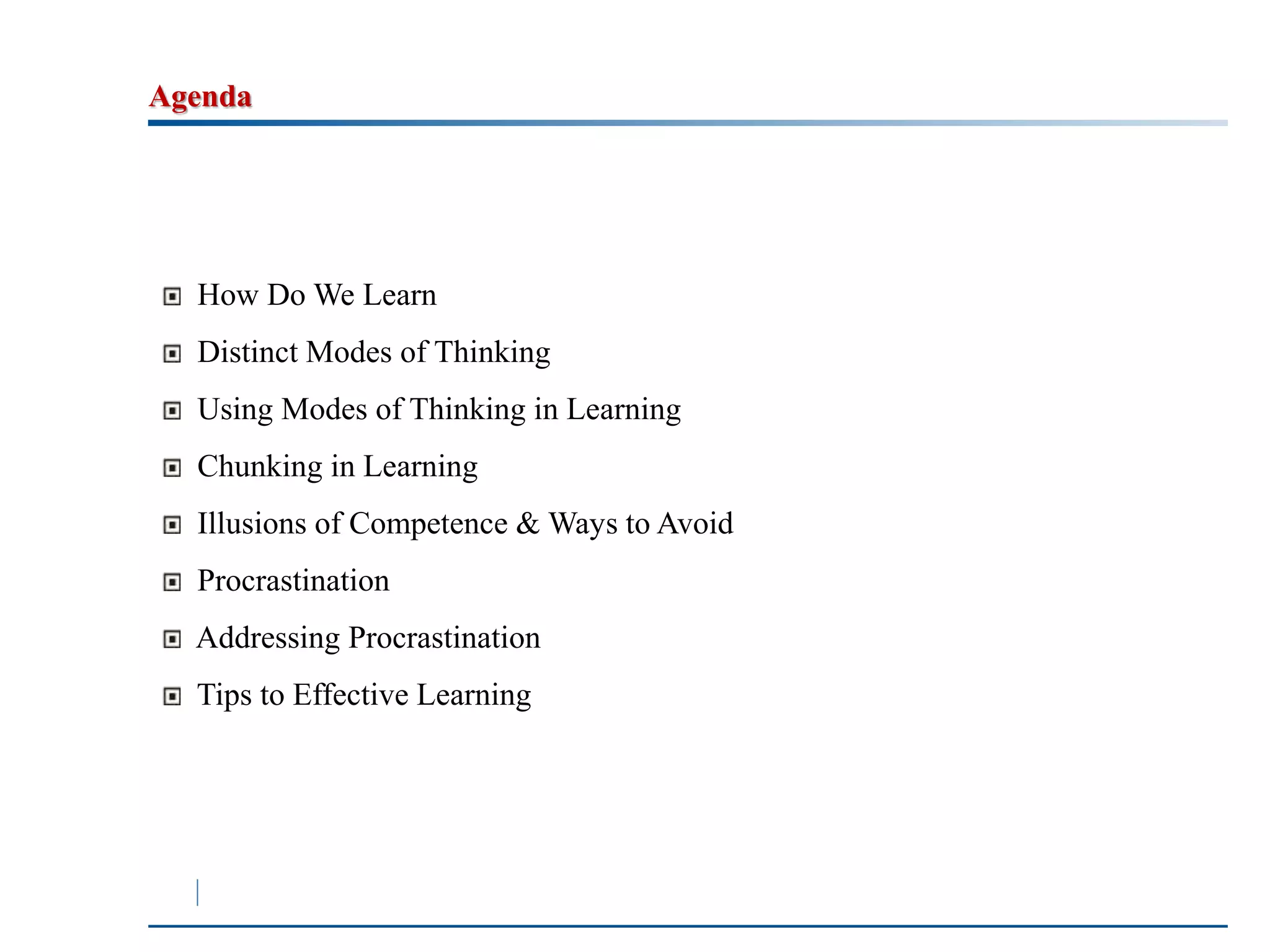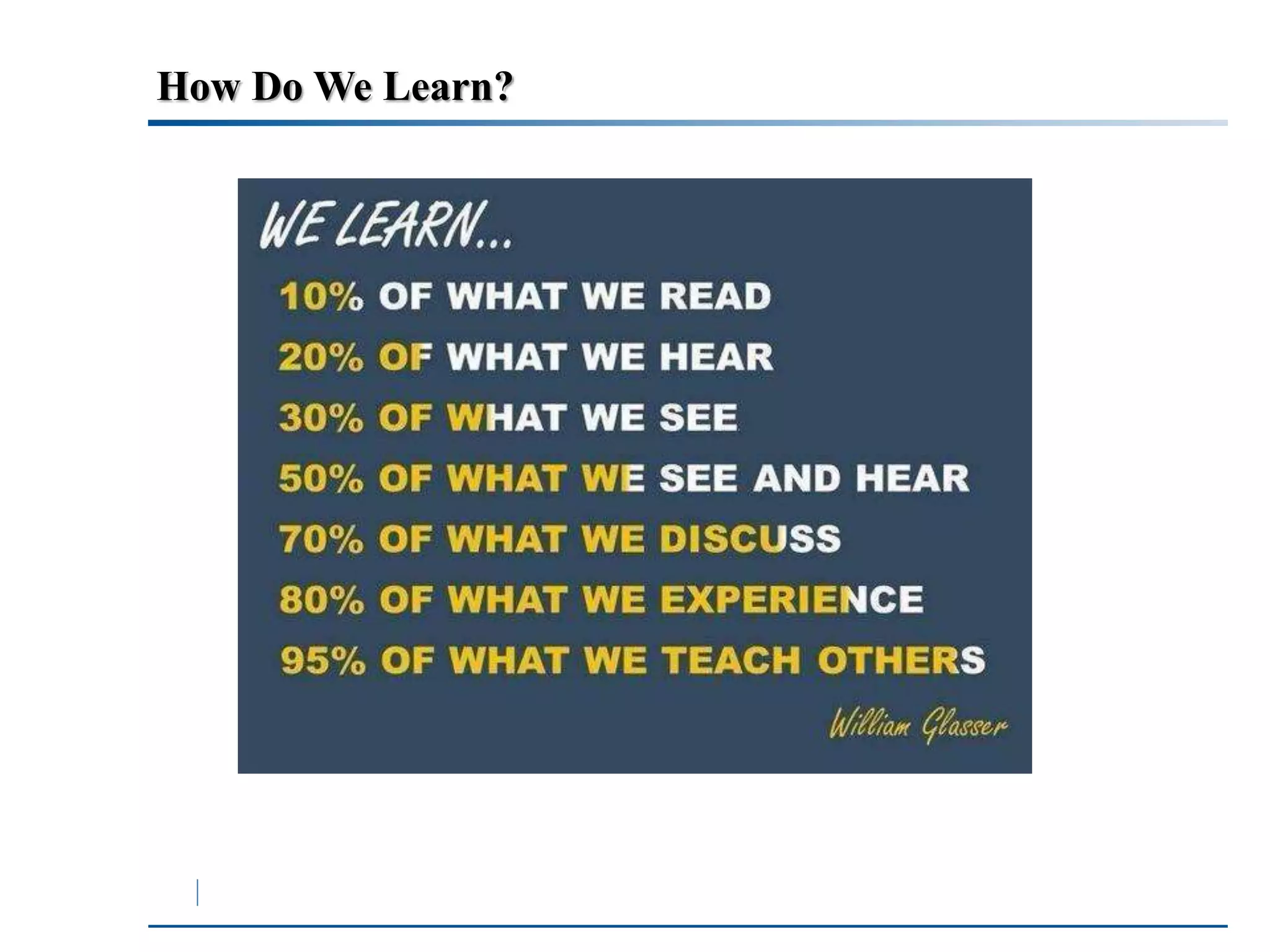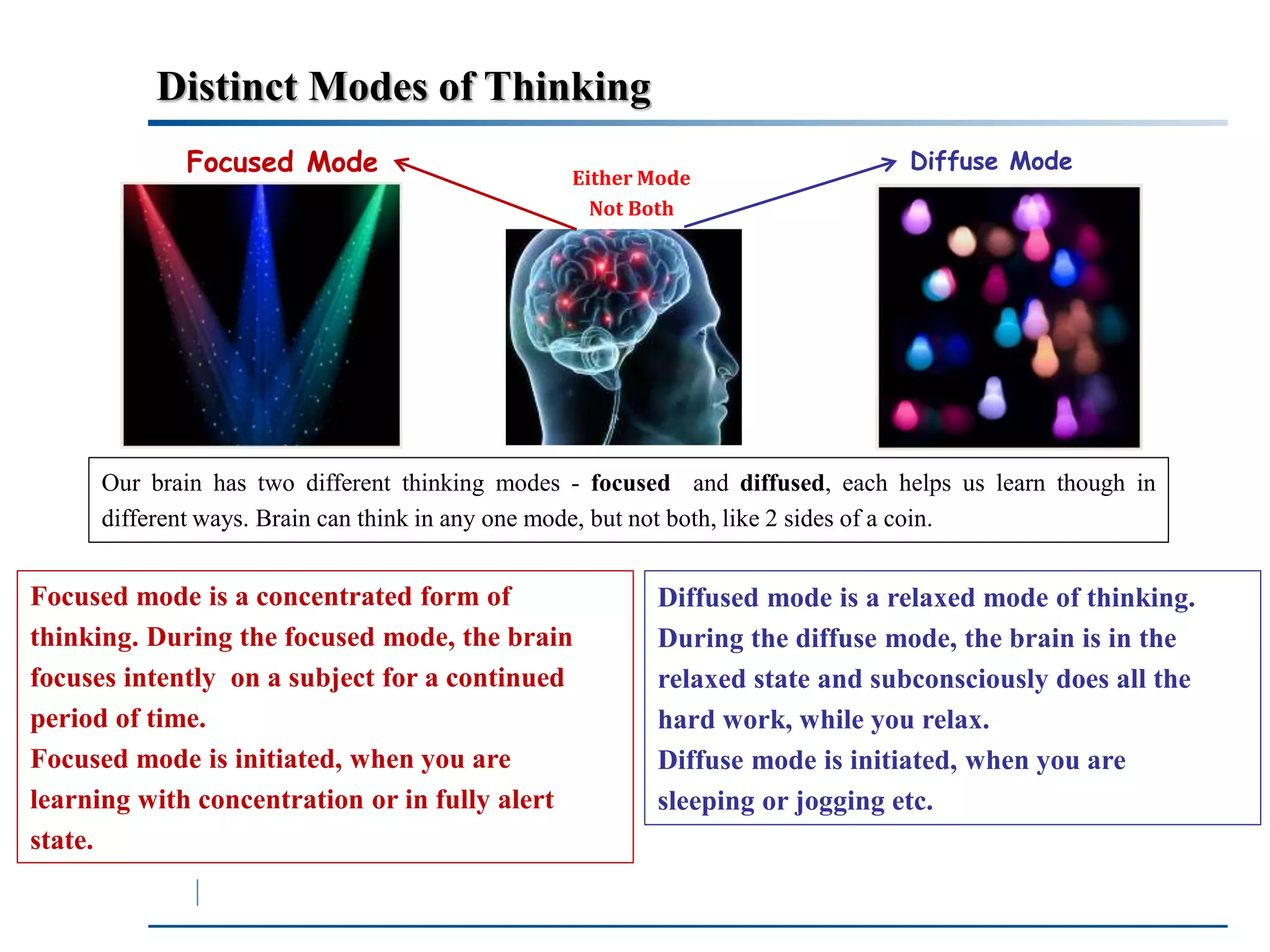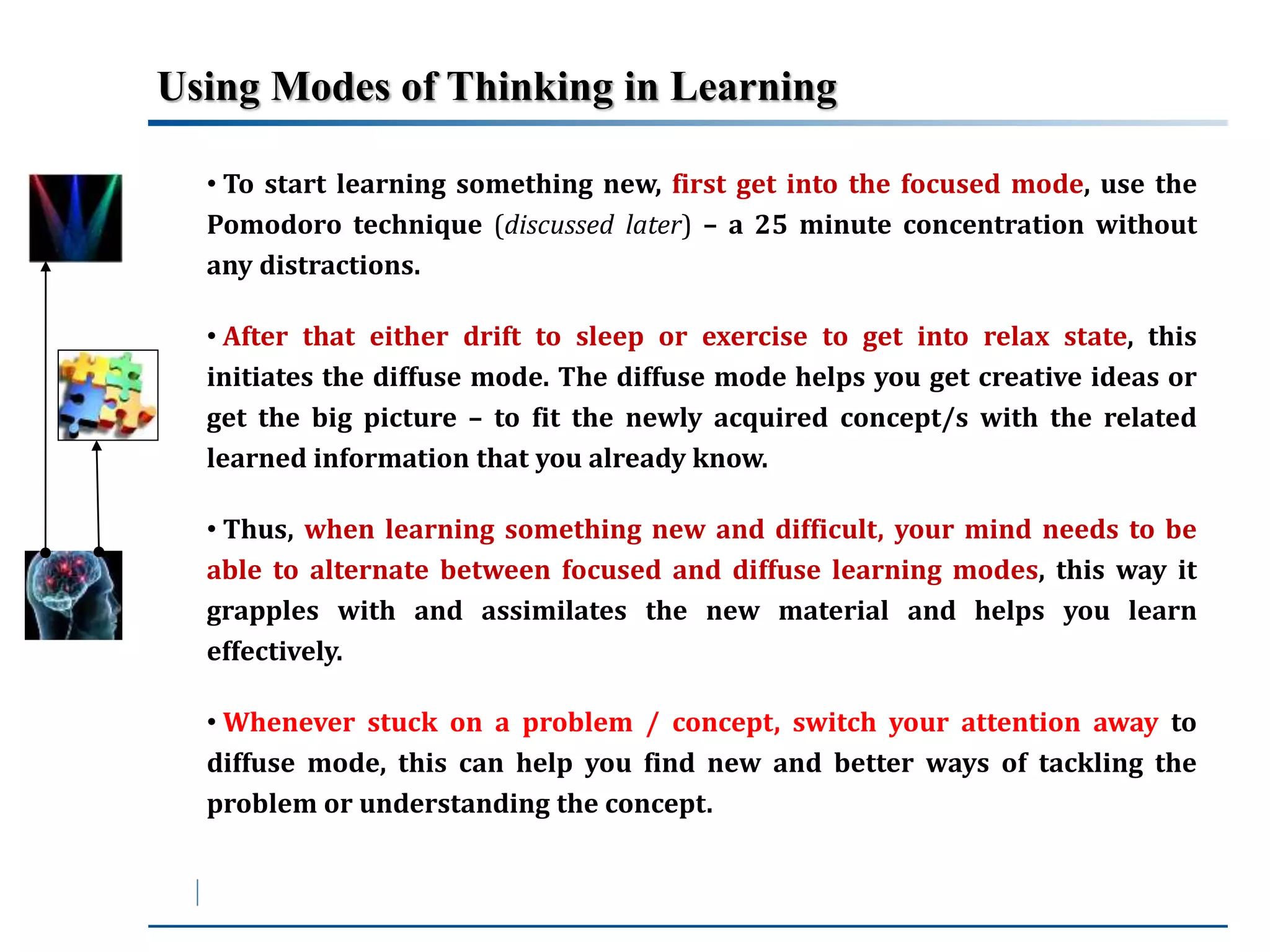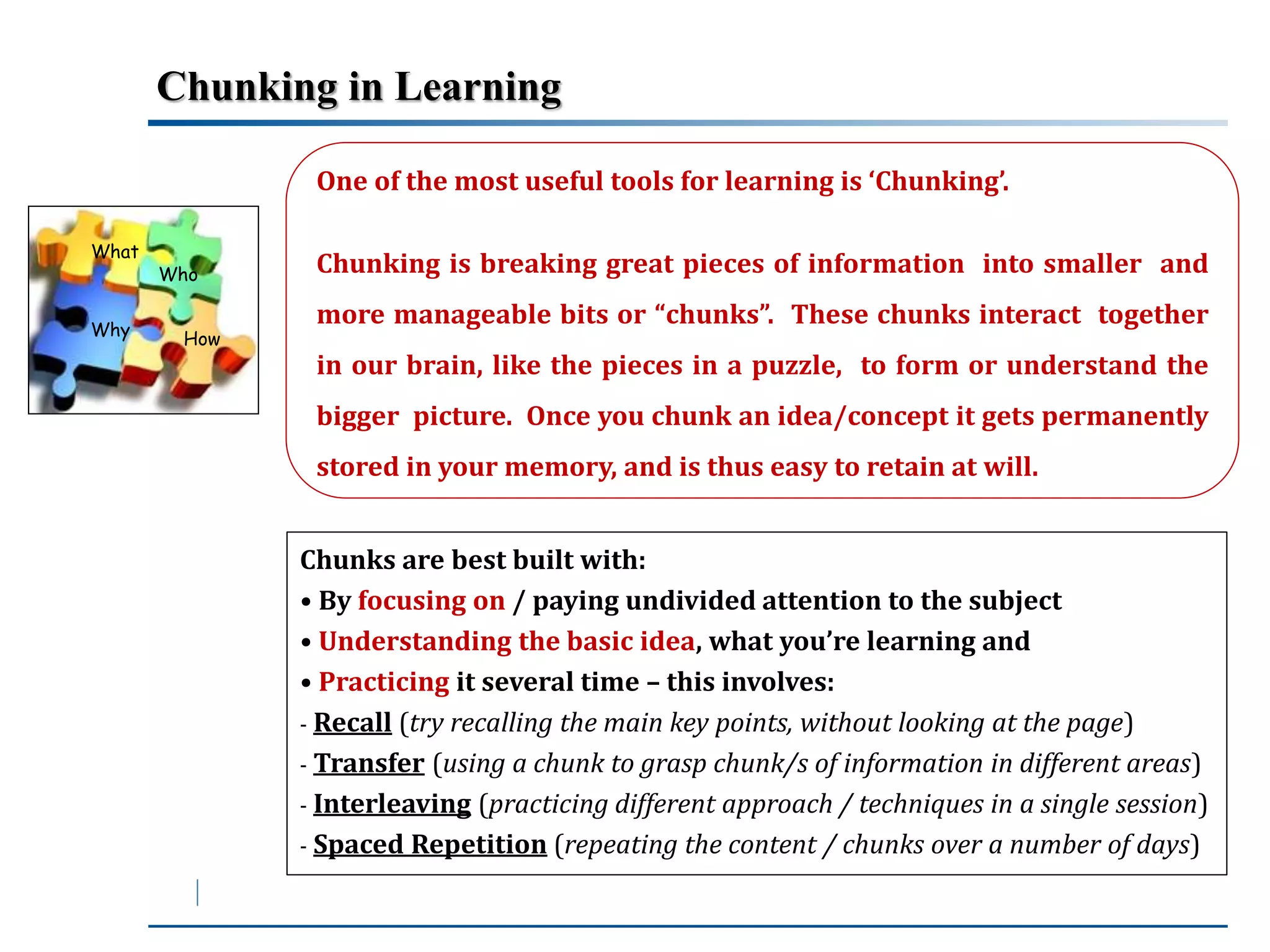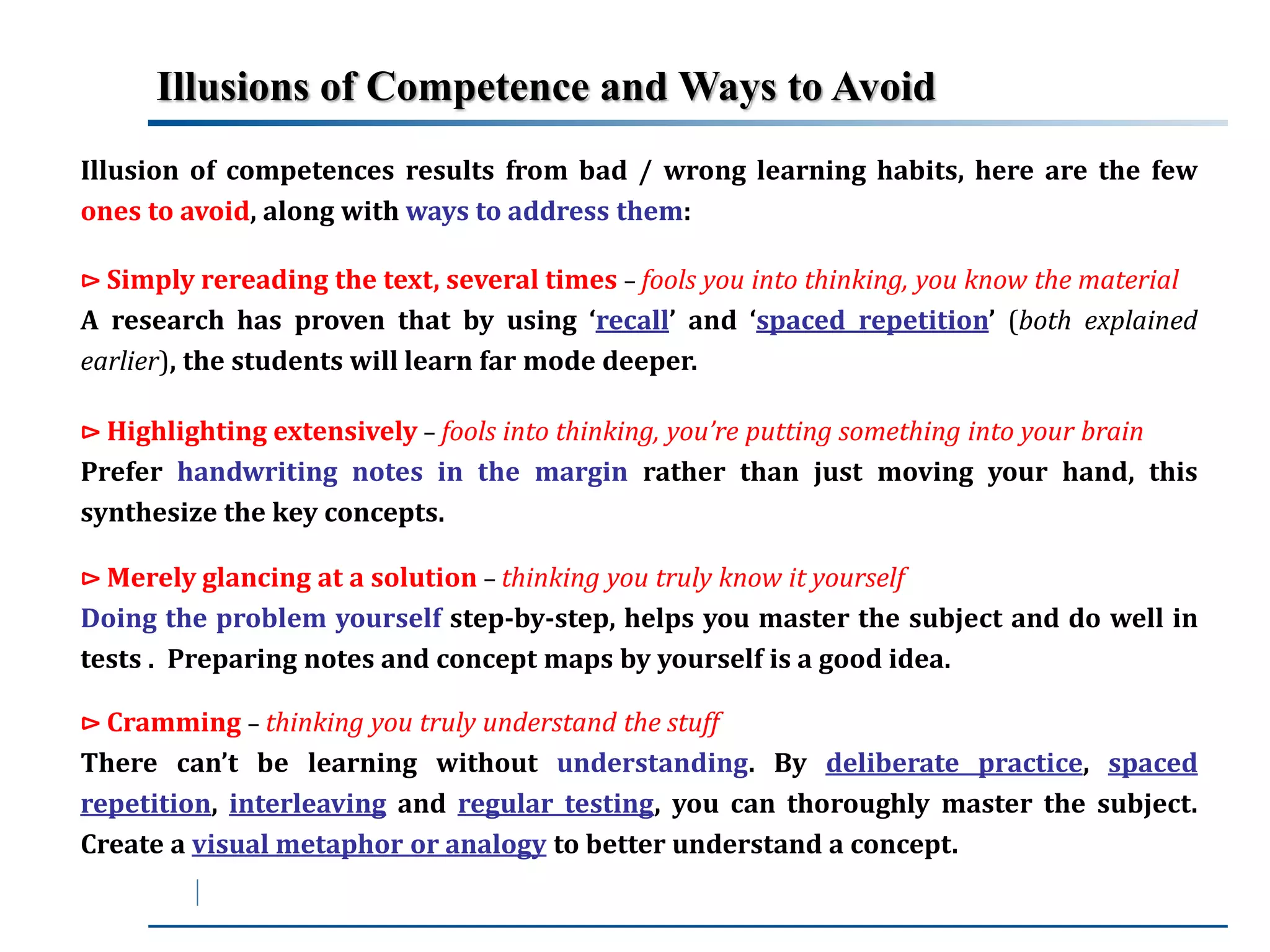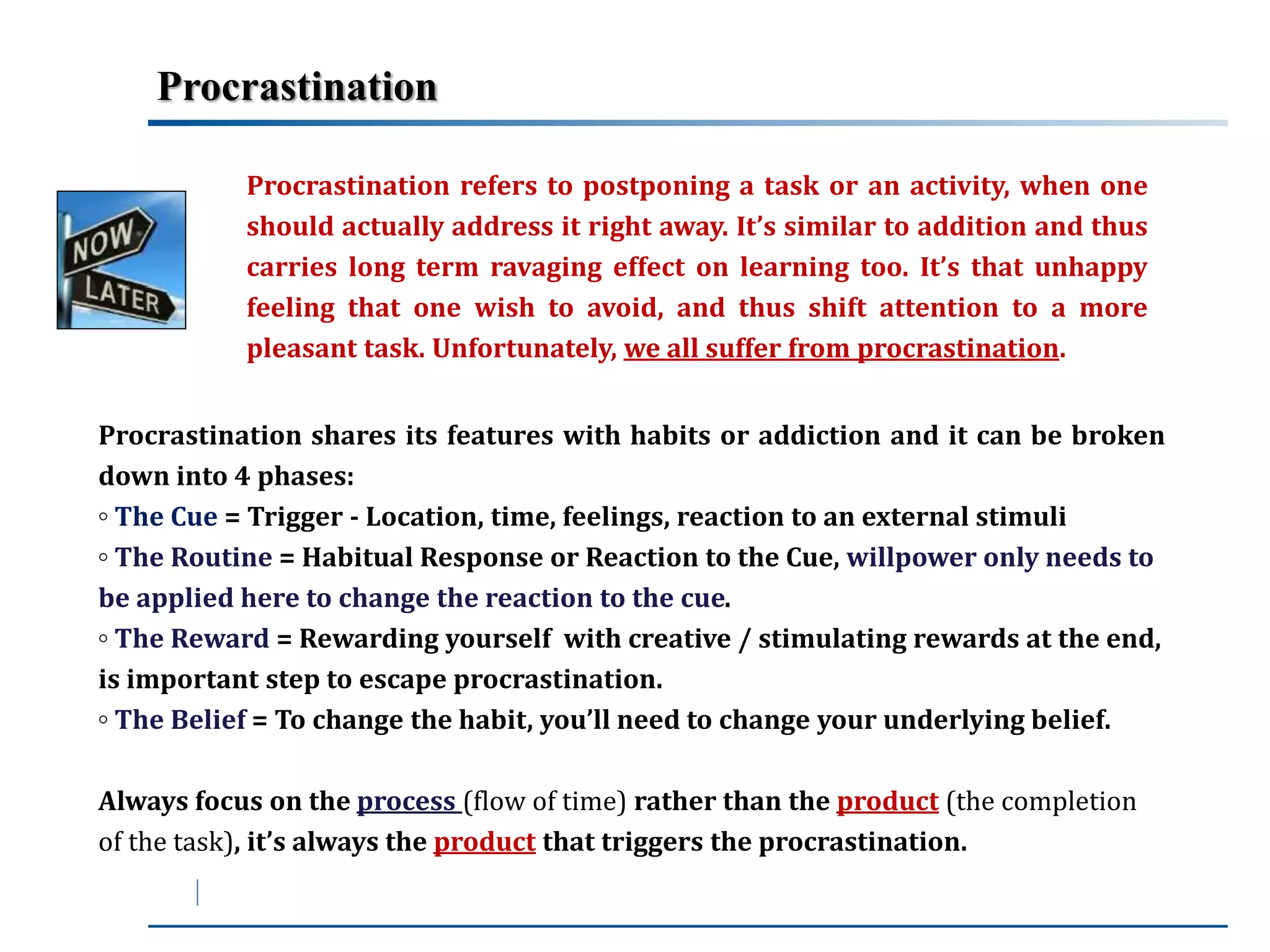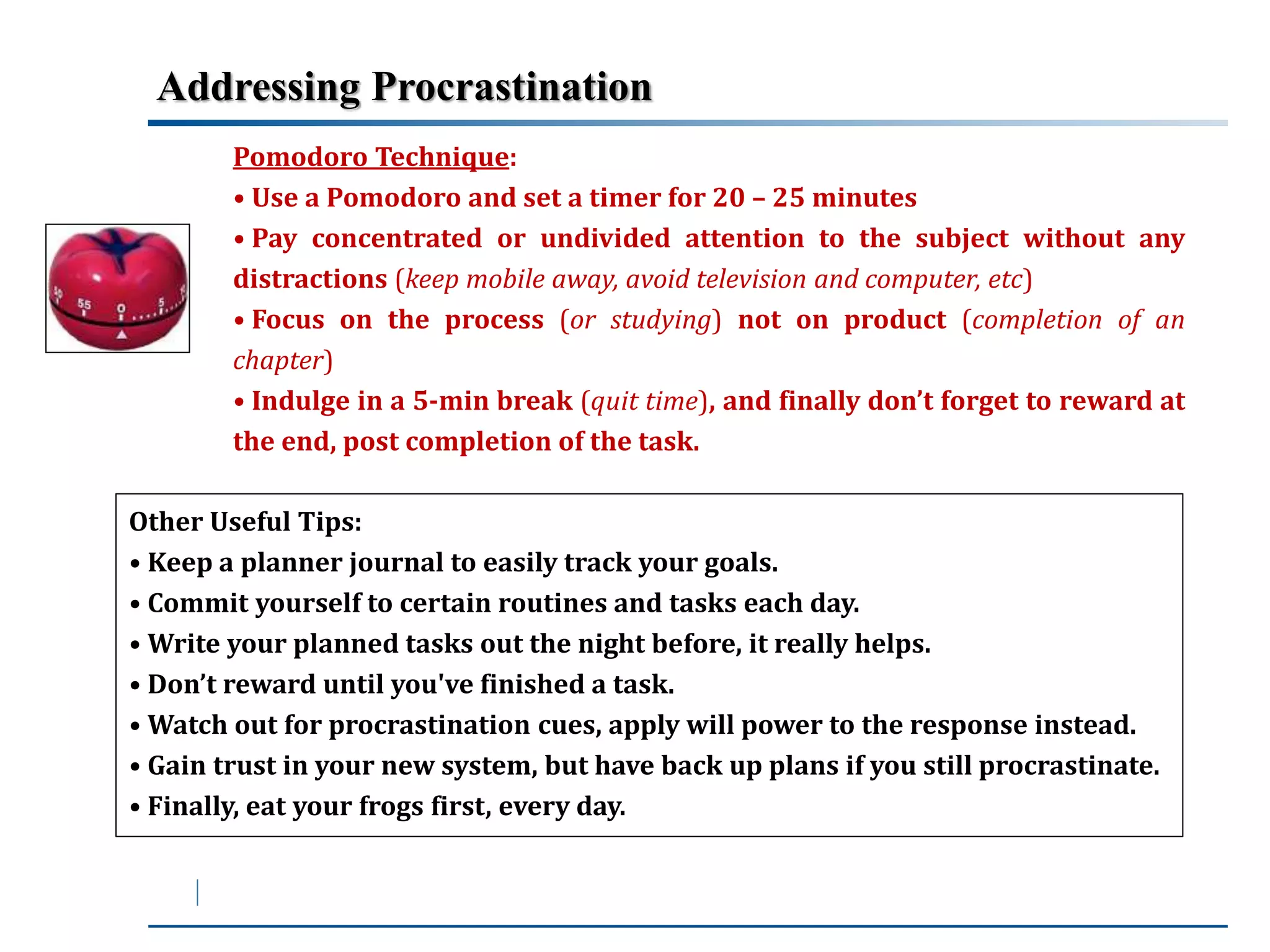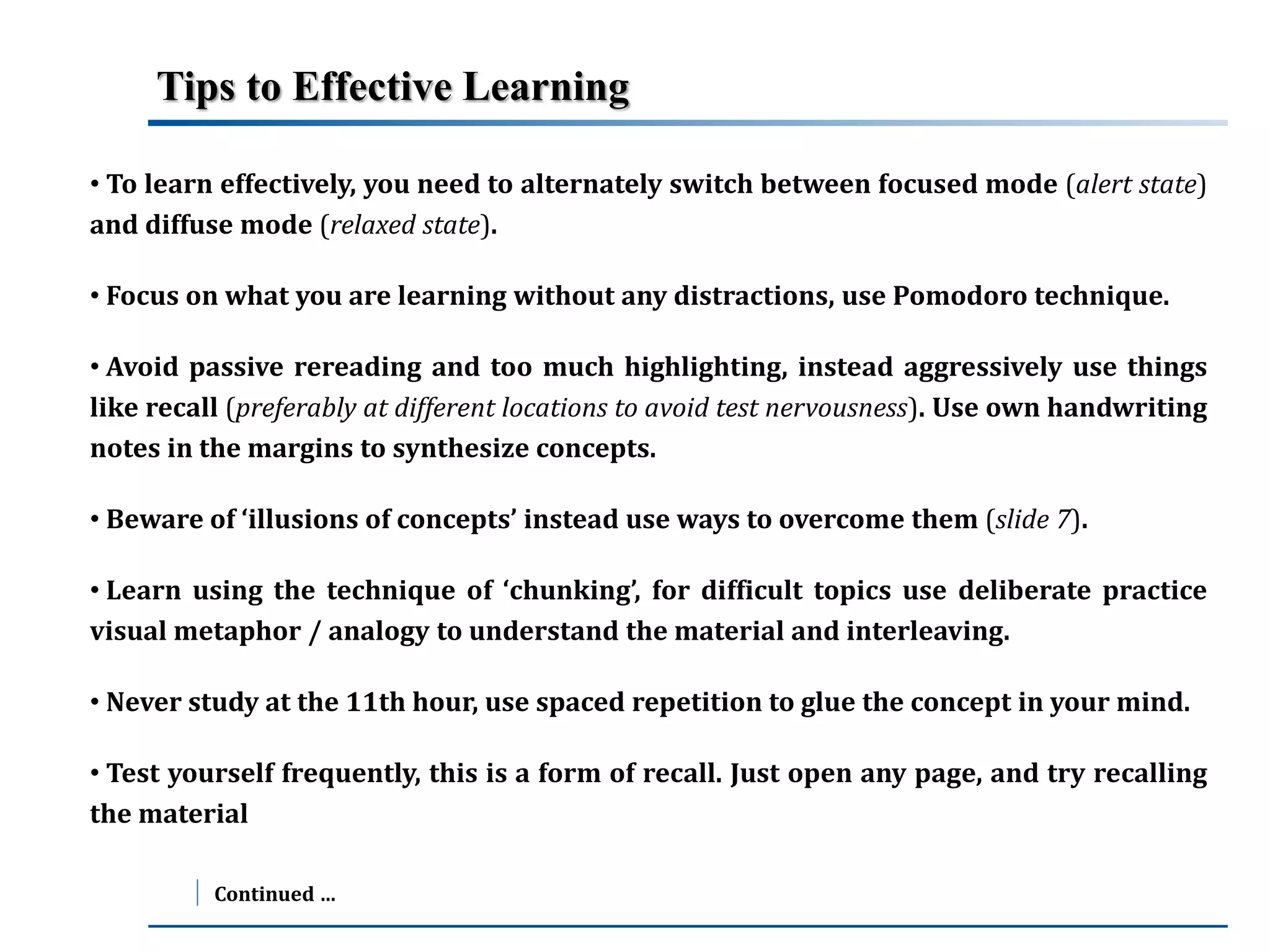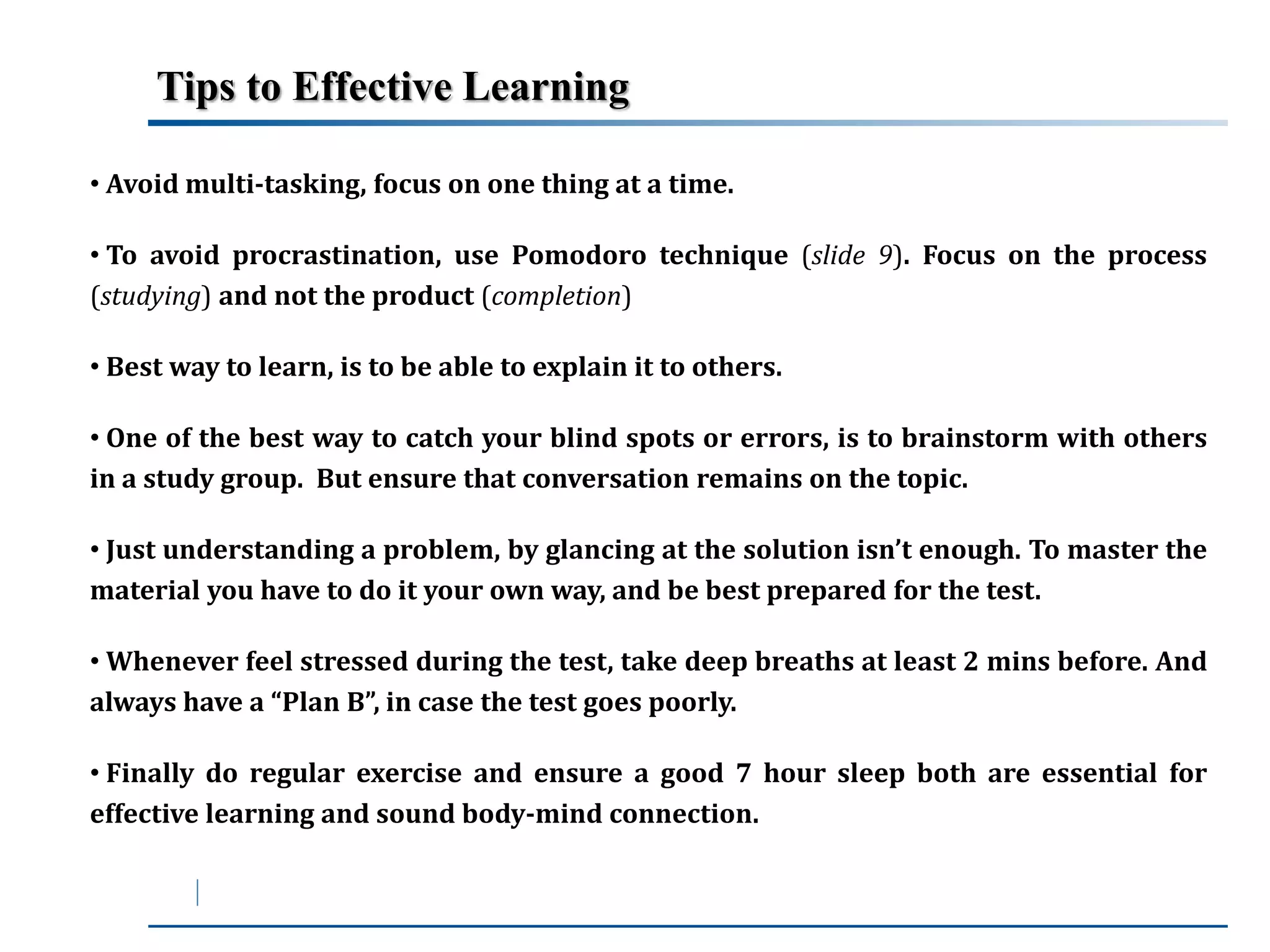Our brain has two modes of thinking - focused and diffuse - that help with learning in different ways. Focused mode is for concentrating on a subject, while diffuse mode occurs when relaxed and allows for creative insights. To learn effectively, one must alternate between these modes, using focused time to study new concepts and diffuse time like sleep to process them. Another important learning technique is chunking, which involves breaking information into smaller, memorable pieces. Procrastination can be addressed using the Pomodoro technique of focused study sessions with breaks, focusing on the process rather than the product, and rewarding oneself upon completion of tasks.
